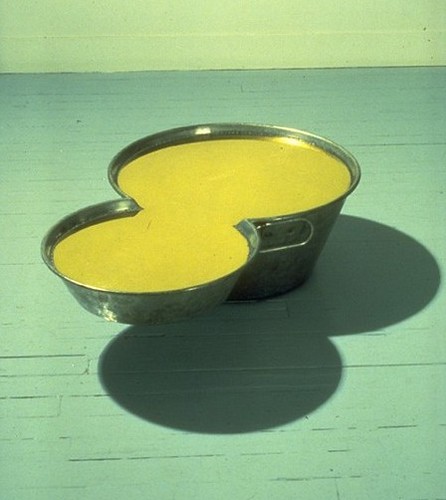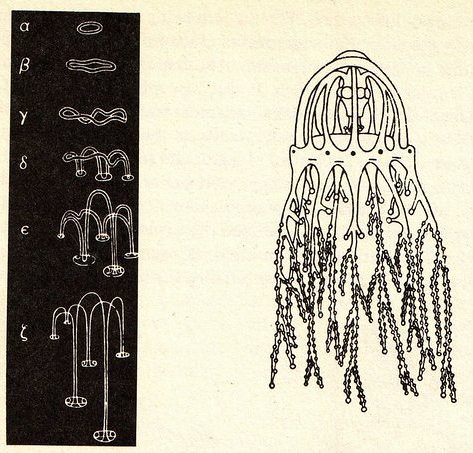
Corban Walker has new website here: http://www.corbanwalker.com

Corban Walker has new website here: http://www.corbanwalker.com
A series of objects collected from between the pages of books in public libraries in Dublin during the summer of 2009. Each object is captioned by the title of the book in which it was found. This video was produced as a part of an installation at the National Library in Dublin as a part of the offsite exhibition Preponderance of The Small organised by the Douglas Hyde Gallery. More info at preponderanceofthesmall.blogspot.com/
There's a nice video of Miroslaw Balka's new piece in the Turbine Hall at Tate Modern on the Guardian website here. Annoyingly they don't allow embedding.

An early and brilliantly minimalist model of the lunar module that, on July 20, 1969, landed on the moon with Neil Armstrong and Buzz Aldrin aboard.
via boingboing



These images are of the latest installment of my ongoing Found Bookmark Project which is currently on show at the National Library on Kildare Street in Dublin. The piece (which involves a collection of objects found in libarary books over the Summer) was made for Preponderance of The Small, "an off-site project which forms part of The Douglas Hyde Gallery's ongoing Gallery 3 initiative, featuring works by twenty-one younger artists working in Ireland."
There is an article in todays Iirsh Times that claims "the arts cement our reputation abroad, are crucial to our smart economy, provide employment at home, fuel cultural tourism, and help form the nation’s psyche – they are vital to our national recovery". So hopefully the government will pay attention when they put together the next budget.
Full text here
 Sculptures made using a computer controlled concrete-piping machine by Anish Kappor at the Royal Academy
Sculptures made using a computer controlled concrete-piping machine by Anish Kappor at the Royal Academy
Below is a series of video stills from a project which opens at the National Library on Kildare street in Dublin on 25th September. Each object was found in a book in a public library in Dublin during the summer and the captions are the titles of those books. The porject is a part of the off-site exhibition The Preponderance of the Small which is part of the Douglas Hyde Galerry's Gallery 3 programme.






From AIR, Art International Radio "an Internet radio station and free online audio archive for cultural programming".


Robber Baron table (2006) by Studio Job currently on show at the V&A - from the Guardian.
The assistant secretary general at the Department of Arts, Sport and Tourism, Niall O’Donnchu, has written to the directors of several national institutions, including the Irish Museum of Modern Art (Imma), the National Gallery of Ireland and the Crawford Art Gallery, suggesting they seek out “commercial opportunities” for their organisations, and adopt “more populist” exhibition policies.
A copy of one of the letters, seen by The Irish Times, states that while acknowledging that the institution already pursues “commercial opportunities and businesses . . . We would ask, however, that you and your board take a focused opportunity to examine afresh whether all commercialisation and commodisation [sic] opportunities are being exploited to the maximum by you”.
After querying the institution’s exploitation of merchandising and related activities, the letter also examines policy and programming and asks: “Could your exhibition policies be more populist?”
Quoted from an article in yesterday's Irish Times - full text here
My work is featured in a group exhbition at the Green on Red Gallery, Dublin which opens on Wednesday 8th July. The show is titled Dawning of an Aspect and also features the work of Damien Flood, Laura Lancaster and Sonia Shiel.
Green On Red Gallery presents Dawning of An Aspect, an exhibition of four artists whose work offers an exploration of our capacity for perception through painting and sculpture. ‘Dawning of an aspect’ is taken from both Wittgenstein’s and Wollheim’s philosophical writings on the fundamental distinction between our perception and plain seeing. While the writings on this subject are based on painting, in this exhibition it is also applied to sculptural objects that reveal themselves through the act of looking. This twofold nature of our perception involves both the surface and subject simultaneously.
Wittgenstein's aim was to dissolve the paradoxical appearance of aspect-dawning: when looking at a picture-object we can come to see it differently, although we also see that the picture-object itself remains unchanged. Wollheim’s writings view the expressiveness of depiction through psychoanalytic concept of projection in which we come to see a piece of the external world as corresponding to an inward state of mind which he referred to as the internal spectator. The experience of seeing resemblances within the pictorial representation is an essential aspect of this idea. More info here

Here's an image of a Richard Wentworth piece I found online - no caption info available though.
This quote from James Gleick's book Chaos: Making a New Science
Clouds are not spheres, Mandelbrot is fond of saying, Mountains are not cones. Lightning does not travel in straight lines. the new geometry mirrors a universe that is rough not rounded, scabrous, not smooth. it is a geometry of the pitted, pocked, and broken up, the twisted, tangled, and intertwined. The understanding of nature's complexity awaiting a suspicion that the complexity was not just random, not just accident. It required a faith that the interesting feature of lightning was not its direction, but rather the distribution of zigs and zags. Mandelbrot's work made a claim about the world, and the claim was that such odd shapes carry meaning. The pits and tangles are more than blemishes distorting the classic shapes of Euclidian geometry. They are often the key to the essence of a thing.

These illustrations by D'Arcy Wenworth Thompson show the shapes made by drops of ink in water (left) and the tentacles of a jellyfish (right).
They are taken from a book called Chaos: The Amazing Science of the Unpredicatable by James Gleick and originally appeared in Wentorth Thompson's book On Growth and Form 